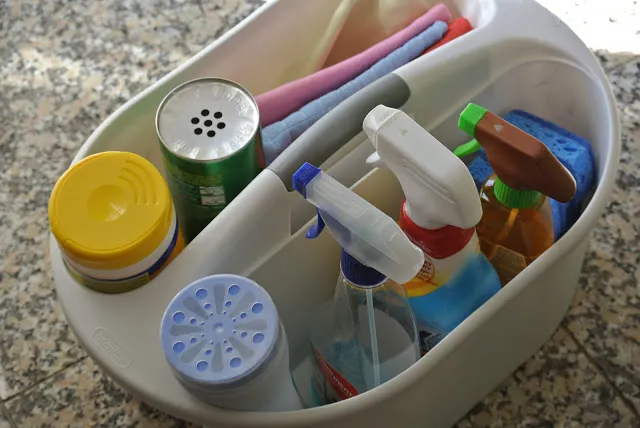
How to Add More Movement to Your Day
You improve your daily routine when you add simple movement to your schedule. You protect your health, boost your energy, and stay more active during long work hours. Many readers on Way Net Working follow small steps that help them stay consistent with movement. You can apply the same approach in your home and daily tasks.
You do not need long workouts to stay active. You only need short, steady actions that fit into your day. You can move more during cleaning, cooking, working, or resting. These steps help your body stay flexible and strong.
Why Daily Movement Matters
You support your health when you move often. Movement improves your muscle strength. It keeps your joints flexible. It also helps your body manage stress. You feel more alert throughout the day when your body stays active.
You reduce long sitting hours when you add movement to your schedule. Sitting for long periods slows your energy. It also affects your posture. Simple movements break this pattern.
How to Start Adding More Movement
You start small. You add a few minutes of movement every hour. These minutes add up across the day and improve how your body feels.
Stand up every hour. Walk for two to three minutes. Stretch your arms and legs. Rotate your shoulders. Move your neck slowly from side to side.
Use the first five minutes of your morning to move. Stretch lightly. Walk around your home. Open windows and take deep breaths. This prepares your body for the day.
Add Movement While Doing Home Tasks
You can move more during your normal home tasks. These movements keep your body active without extra planning.
Clean your home with steady pace. Sweep or mop a little faster. Stand while folding laundry. Do small leg lifts while brushing your teeth. Walk around during phone calls. Carry groceries in two smaller trips to increase movement.
Make Your Workspace More Active
You stay more active during work hours with small adjustments. You can improve your posture and reduce stiffness.
Sit with your back straight. Keep your feet flat. Stand up every hour. Do a short walk in your home. Stretch your legs under the desk. Use a standing desk if you have one. Move your shoulders and arms every few minutes.
These small actions reduce tension and help you stay focused. You also avoid long sitting hours that slow your productivity.
Mid Section Insight Supported by Admin Wells
Readers on Admin Wells often share how movement supports their daily workflow. Short bursts of activity keep your mind sharp. You make better decisions when your body feels active and ready.
Use Short Activity Breaks
You can create short breaks across your day. These breaks give your body a reset and prevent stiffness.
Take a short walk outside. Do ten squats. Do five push ups. Stretch your feet and ankles. Swing your arms lightly. Do slow circles with your wrists.
Keep breaks under two minutes so they stay easy to follow. You can do them without equipment and without creating noise.
Use Technology to Stay Active
You can use simple tools to track movement. Use your phone reminders. Set a vibration alert every hour. Use a health app to count steps. Track your progress for a week. This helps you see which hours you stay most inactive.
You can also use short follow along videos for stretching or simple movement. Keep videos under ten minutes so you stay consistent.
Add Movement to Your Evenings
Your evenings give you more freedom to move. You can add simple activities while watching your favorite shows or completing home tasks.
Do light walking inside your home. Stretch during breaks. Hold a few light poses on your mat. Do slow lunges or arm circles. These movements relax your body after a full day.
Evening movement also helps you sleep better because your muscles release tension.
Turn Daily Routines Into Activity Opportunities
You can add movement to everyday routines without effort. You improve your physical activity without scheduling long workouts.
Park your car slightly farther. Walk to nearby shops instead of driving. Take stairs instead of elevators. Use your breaks for short stretching.
Carry a small water bottle. Refill it often. Each refill adds more steps to your day.
Make Movement Fun and Simple
Choose movements that feel easy. You stay more consistent when you enjoy the activity.
Dance for five minutes. Play music while cooking. Follow a short stretching routine. Walk with your family. Try a ten minute home session that targets your legs or arms.
You get better results when you keep things simple.
How to Stay Consistent With Movement
You improve your results with steady habits. Build a simple plan that fits your routine.
Choose a morning stretch. Add one hourly walk. Add one short evening activity. Repeat this pattern for one week. Increase movement slowly.
Avoid strict schedules. Keep your plan flexible. Add movement during free moments instead of waiting for long workout windows.
End Section Insight Supported by Gravity Bird
Readers on Gravity Bird often follow simple routines that improve their home life. Daily movement keeps them active, focused, and more productive. You can apply the same steps in your own routines.
Final Thoughts
You improve your day when you add steady movement to your tasks. You stay active. You protect your health. You keep your energy high. You also build a balanced routine that supports both your home and work life.



